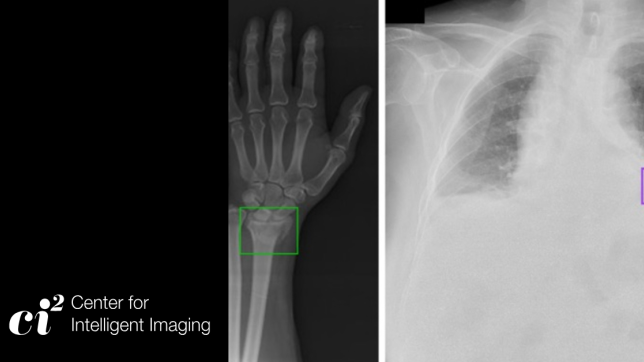Scientists in the Departments of Radiology at the University of California, San Francisco (UCSF) and at the University Medical Center Schleswig-Holstein (UKSH) of the Christian-Albrechts-Universität zu Kiel have a long standing history of collaboration, originating in the 1990s with joint projects of Profs. Sharmila Majumdar and Claus-C. Glüer, then both researchers at UCSF.
As an initiative of the Kiel association "The Bay Areas", the idea to initiate a twin city link between the cities of Kiel and San Francisco was born. In 2017 the cities of San Francisco and Kiel signed an agreement to become sister cities. For the signature ceremony Mayor Ed Lee travelled to Kiel and, Prof. Sharmila joined as part of his delegation and participated in the signature events.
During the 2017 celebrations of the new partnership between the two cities, Prof. Glüer and Majumdar embarked on a new collaboration in the field of artificial intelligence. This collaboration was actively developed, both online including a webinar series "Trans-Atlantic UCSF/CAU Webinar on Artificial Intelligence in Biomedical Imaging", and by personal exchange visits between Kiel and San Francisco. The CAU supported these activities with the grant "Intelligent Imaging International". Immediately post-pandemic when travel was resumed, a workshop on "AI in Imaging" was held in Kiel in June 2022, with Prof. Majumdar and team participating. Return visits by Prof. Glüer and team are planned for this fall.
A fundamental requirement for development of powerful AI tools is the availability of Big Data. International cooperation is essential to ensemble enough high-quality data, with experts from different labs and background joining forces. Data privacy, on the other hand, represents a major challenge for such efforts and to overcome those hurdles a new technology named "federated learning" was developed in the AI community. With this technology, critical data can stay local and remain anonymized whereas the AI models travel back and forth between centers. With every new data set used, and every additional learning step at centers joining the network, the performance of the travelling AI improves, pretty much as if all data would be collected in one central place. With this technology the positive aspects of collaboration, high data quality and safety and scientific exchange materialize.
Over the past several months the teams of the Center for Intelligent Imaging (ci2) of the Department of Radiology and Biomedical Imaging in San Francisco and the Intelligent Imaging Lab (i2Lab) of the Section Biomedical Imaging, Department of Radiology and Neuroradiology in Kiel have developed, implemented and tested the IT infrastructure to set up the federated learning AI training across the Atlantic. This project, AI FLEX (AI Federated Learning Exchange), will be the backbone of even closer cooperation between UCSF and CAU teams, in Kiel also involving the UKSH, Germany second largest university clinic. In a first test application, we use data from the Study of Osteoporotic Fracture (SOF), run by the San Francisco Coordinating Center originally located within UCSF. SOF is a landmark study on osteoporosis and other musculoskeletal disorders with close to 10.000 women studied over a period of 23+ years. We use radiographs in this cohort to develop an AI model to predict the risk of a hip fracture occurring in the next 10 years, a basis to initiate prevention for patients at risk. Specifically, we verify that AI training works efficiently using the federated learning platform of AI FLEX, with SOF data distributed on both sides of the Atlantic.
Where will we go from here? There are plenty of opportunities ahead. Importantly, the AI FLEX IT Infrastructure could be used for any kind of data, not just images. Think of genetics, clinical and laboratory data. Or image data from other application areas, like satellite data for climate research, or drone surveyance images or videos covering anything from agriculture to wildfires. Our two centers will continue the work on musculoskeletal disorders, with Prof. Majumdar's team focusing on osteoarthritis and back pain and Prof. Glüer's team working on osteoporosis and emergency medicine for stroke and accident patients. These are timely medical applications perfectly fitting with the UN Decade of Healthy Aging 2021-2030. In all of the tasks AI methods developed will function as reliable, untiring, thorough and knowledgeable assistant to physicians.



